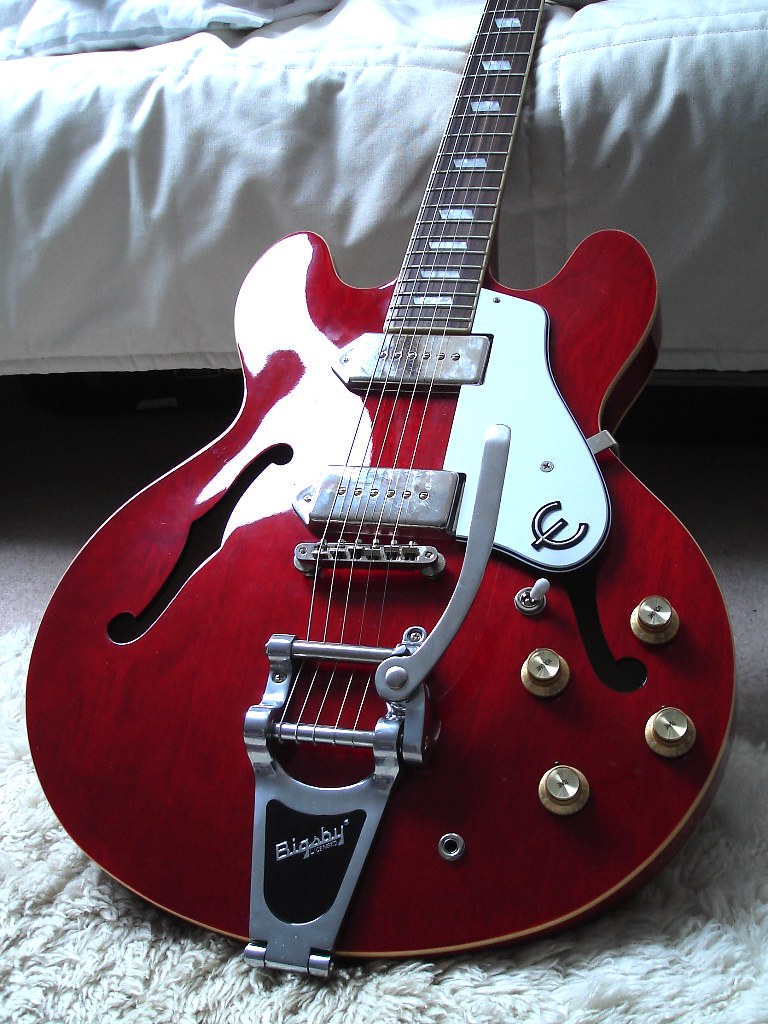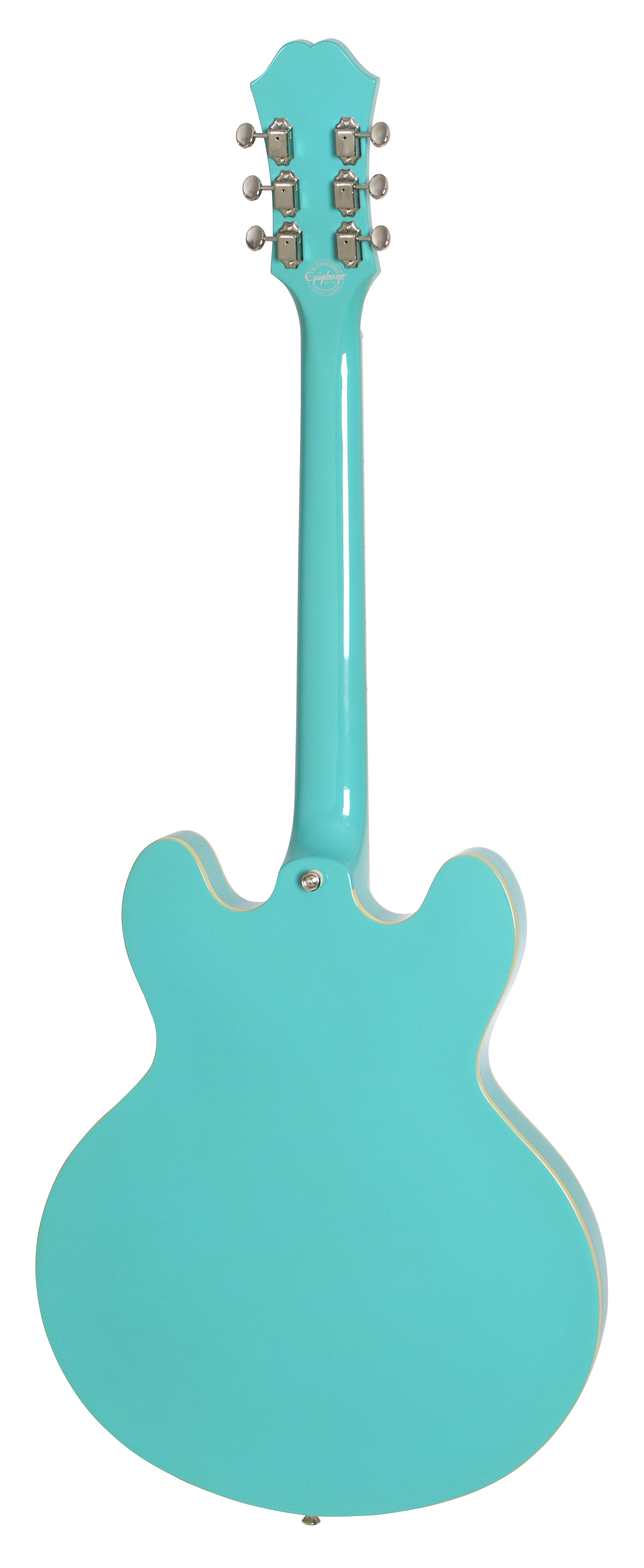Epiphone Casino Feedback
- Epiphone Casino Coupe Review
- Epiphone Casino Feedback Survey
- Epiphone Casino Feedback
- Epiphone Casino Coupe Feedback
Joel sings (and plays) the praises of the Epiphone Standard Casino (most specifically the one in his hands that features a Cherry fin. I had an Epiphone casino from the 90s, and its case fit perfectly. But at this price, it is not much concern since there is enough plush interior to pad it and keep it secure. The accessory compartment feels a. Our Man Lee Wrathe takes a a close look at the guitar designed for modern blues maestro Gary Clark JR, this Epiphone Casino is fitted with Gibson USA P90 pic.
| Epiphone Casino | |
|---|---|
| Manufacturer | Epiphone |
| Period | 1961–present |
| Construction | |
| Body type | hollow |
| Neck joint | Set |
| Scale | 24.75' with 14' fretboard radius |
| Woods | |
| Body | maple (laminated) |
| Neck | mahogany on most models in most periods; sometimes maple |
| Fretboard | rosewood on most models, ebony on some |
| Hardware | |
| Bridge | adjustable Tune-o-Matic style |
| Pickup(s) | 2 P-90s |
| Colors available | |
| Vintage Sunburst, Turquoise, Natural[1] | |
The Epiphone Casino is a thinline hollow body electric guitar manufactured by Epiphone, a branch of Gibson. The guitar debuted in 1961 and has been associated with such guitarists as Howlin' Wolf, George Harrison, John Lennon, Paul McCartney, Keith Richards, Dave Davies, Paul Weller, The Edge, Josh Homme, Daniel Kessler, Noel Gallagher, Brendon Urie, Gary Clark, Jr., Glenn Frey, John Illsley, Peter Green and Dave Grohl.[1][2]
Casinos have been manufactured in the United States, Japan, Korea and China.
Construction[edit]
The Casino, also designed by Epiphone as model E230TD, is a thinline hollow-bodied guitar with two Gibson P-90 pick-ups. Although generally fitted with a trapeze-type tailpiece, often a Bigsby vibrato tailpiece is used in its place (either as a factory direct feature or as an aftermarket upgrade). Unlike semi-hollow body guitars such as the Gibson ES-335, which have a center block to promote sustain and reduce feedback, the Casino and its cousin, the Gibson ES-330 are true hollow-bodied guitars. This makes it lighter, and louder when played without an amplifier, but much more prone to feedback than semi-hollow or solid-body electrics.
Early versions of the Casino had a spruce top. Through 1970, the Casino headstock was set at a 17-degree angle and the top was made of five laminated layers of maple, birch, maple, birch, and maple.[1][3] With the exception of the John Lennon models, subsequent Casinos have been made with 14-degree headstock angle with five layer all maple laminated tops. Current versions have a laminated maple top, sides, and back, and a mahogany neck.[1]
Factory string gauge guide for Casino[edit]
Per the Epiphone String Gauge Guide, the Casino comes with string gauges (from high to low): 0.010' 0.013' 0.017' 0.026' 0.036' 0.046'.[4]
Use by the Beatles[edit]
In 1964, Paul McCartney, The Beatles' bass player, was the first Beatle to acquire a Casino[5] (a 1962 model), using it for his studio forays into guitar work, including his guitar solos on 'Ticket to Ride' (1965), 'Drive My Car' (1965) and 'Taxman' (1966). In 1965 John Lennon and George Harrison bought 1965 Casinos,[5] which are clearly seen in photos of Japan concerts (last World Tour, 1966).
Epiphone Casino Coupe Review
John Lennon used the Epiphone Casino as his main instrument during the remainder of his time with the Beatles.[5] In 1968 when the Beatles were making the White Album, Lennon had the pick guard removed from his Casino and professionally sanded to bare wood and lightly lacquered with two thin coats of nitro-cellulose.[citation needed] In the early seventies, the original tuners were replaced with a set of gold Grover tuners or machine heads. His stripped guitar (still with the original nickel tuners) is first seen in the 'Revolution' promo film. The guitar was used at The Rolling Stones Rock and Roll Circus in December 1968, the Apple rooftop concert on January 30, 1969, and the concert of Live Peace in Toronto 1969 with the Plastic Ono Band on September 13, 1969. It can also be seen in the Let It Be film, including the rooftop concert, and most other pictures of Lennon playing guitar after that time.
Harrison had his fitted with a Bigsby trem, removed the pickguard (it can be seen in this state in the 'Hello Goodbye' and 'Penny Lane' videos, and in pictures of the final Beatles show in San Francisco, 1966). He also had it sanded down in 1968.
Current Casinos[edit]
Epiphone currently builds several versions of the Casino. These include:
- Regular 'Archtop-Series' Casino made in China and uses non-American made parts (Korea until 2007)[1]
- Elitist Casino. Made in Japan and set-up in America, and contains American made parts such as the pickups. Body is 5-ply maple, Gibson P-90 pickups, and nickel hardware.[6]
- Casino Coupé. A smaller version. The body is the same size as a Gibson ES-339.[7]
- Inspired by John Lennon were made in China with American-made 'Tribute' P-90 pickups and a five-ply maple body and are less expensive versions of the now defunct United States Collection John Lennon 1965 / Revolution Casino bodies were built in Japan and assembled in America. The 1965 version has a sunburst finish, white pick guard and small button Grover tuners. The Revolution version was based on the modifications Lennon made to his 1965 Casino during the recording of the White Album, which include a 'stripped' (natural) satin finish, gold Grover tuners, no pickguard, a deeper set-in neck, and Lennon's serial number on the back of the headstock.[1]
- Limited Edition 1961 Casino. This limited version is offered in Royal Tan and Vintage Sunburst, with either a trapeze tailpiece or a tremotone tremolo. It sports a 5-layer maple-birch body, Gibson P-90 pickups, 'short' headstock, bullet trussrod cover, tortoiseshell pickguard, and pre-Gibson era Epiphone badge.[8]
References[edit]
| Wikimedia Commons has media related to Epiphone Casino. |
- ^ abcdef'Epiphone Casino'. Epiphone.com.
- ^'Gary Clark Jr'. GaryClarkJr.com. Retrieved 23 February 2012.
- ^'Antique Vintage Guitars collector info - collecting old VINTAGE GUITARS'. provide.net. Retrieved 5 July 2016.
- ^'Epiphone String Gauges'(PDF). Web.archive.org. Archived from the original(PDF) on September 23, 2010. Retrieved 2014-06-13.
- ^ abc'Epiphone: A History'. Epiphone.com.
- ^'Epiphone Elitist Casino'. Epiphone.com. Retrieved 23 February 2012.
- ^'Expert Review: Epiphone Casino Coupe - Harmony Central'. harmonycentral.com. Retrieved 5 July 2016.
- ^'Epiphone 1961 50th Anniversary Casino'. Epiphone.com.
External links[edit]
Finish
{{activeFinish.Name}}Handedness
{{guitar.Model}} Videos
{{activeVideo.Name}}
P-90 Single Coil Pickup
Legendary Tone
First introduced in the early 1950s, Gibson's legendary P90 single coil pickup produced a raw powerful tone that helped define the blues and rock and roll in their formative years. Today, the P90's traditional combination of high output and brilliant tone is still considered a favorite among many top musicians. Known by such familiar nicknames as the 'Soapbar' and the 'Cobalt,' the P90 still cuts through any type of music, all while displaying amazing tonal sensitivity for everything from blues and rock to mellow jazz riffs. It's perfect as a vintage replacement, and features vintage, braided two-conductor wiring. It's also fully wax potted to eliminate any chance of unwanted microphonic feedback.

Casino Specifications
Body
Neck


Hardware
Epiphone Casino Feedback Survey
Electronics
Epiphone Casino Feedback

Miscellaneous
Epiphone Casino Coupe Feedback
In order to continually improve the design, quality and performance of our products and instruments and to make use of the best materials at all times, Epiphone reserves the right to change specifications without notice.